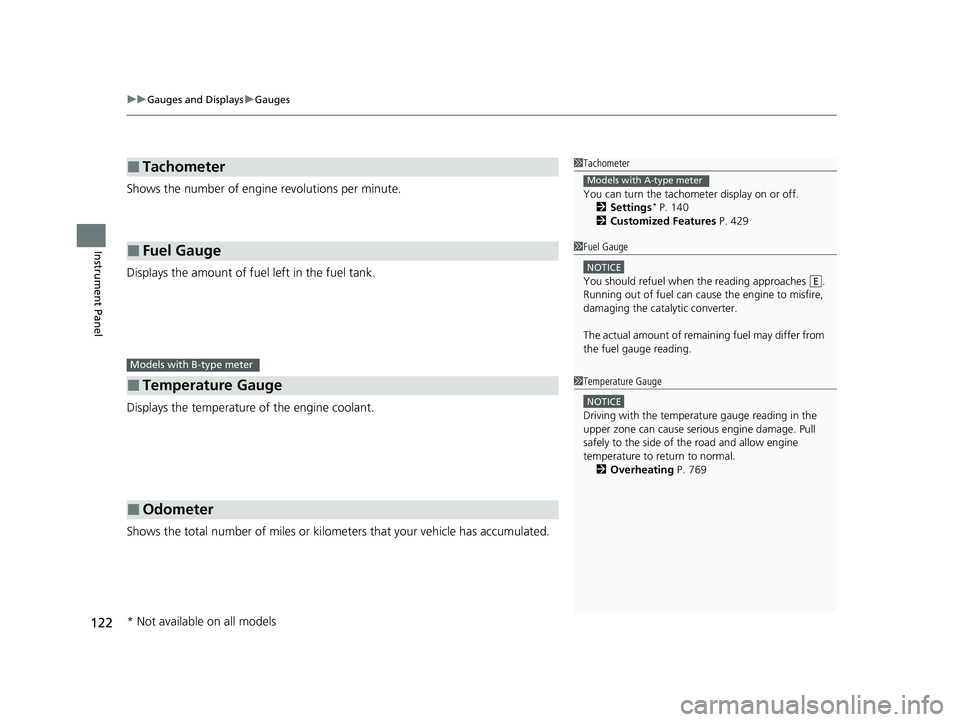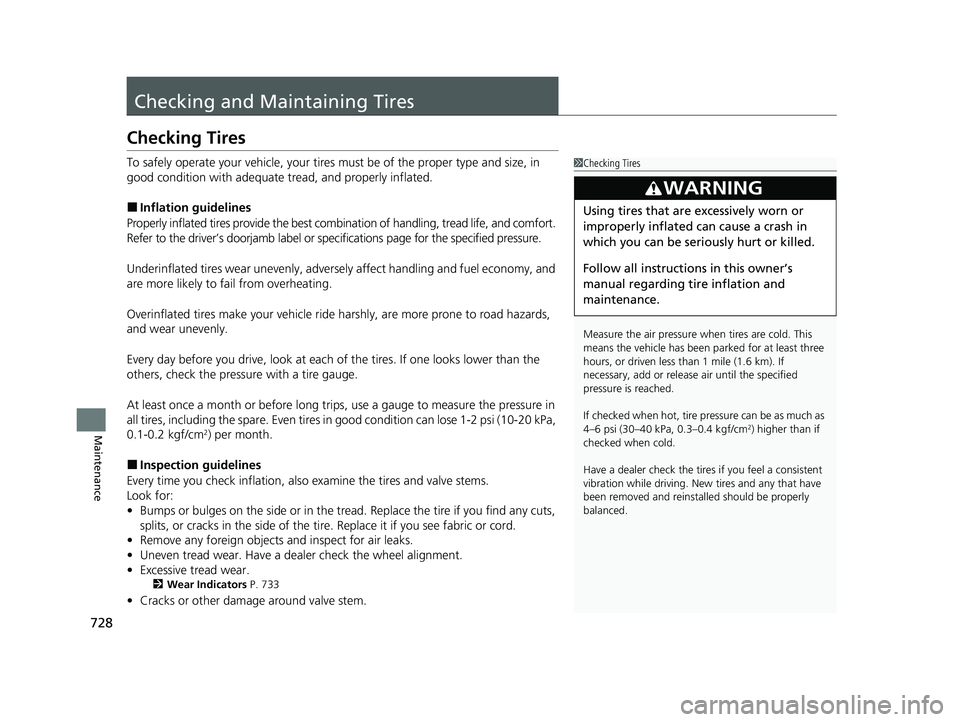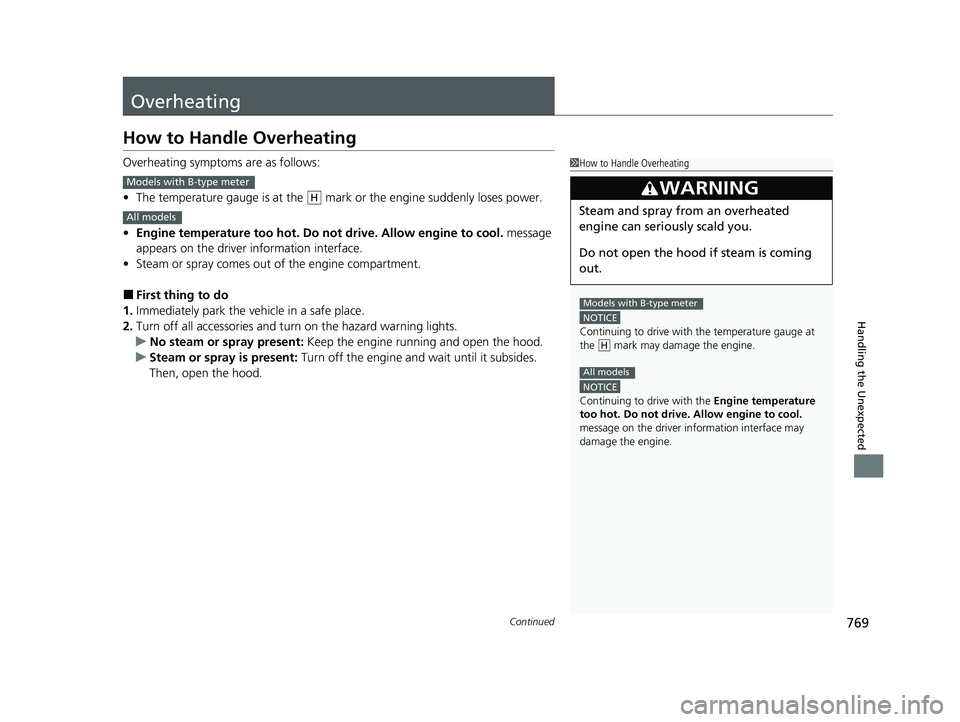2023 HONDA PILOT overheating
[x] Cancel search: overheatingPage 7 of 814

Contents
This owner’s manual should be considered a permanent part of the
vehicle and should remain with the vehicle when it is sold.
The Navigation Manual is available online at owners.honda.com
(U.S.) or honda.ca (Canada). If you are the first registered owner
of your vehicle, you may request a complimentary printed
copy of the Navigation Manual within the first six months of
vehicle purchase. To request a copy, visit owners.honda.com. In
Canada, please request a copy from your Honda dealer.
This owner’s manual covers all models of your vehicle. You may find
descriptions of equipment and features that are not on your
particular model.
Images throughout this owner’s ma nual (including the front cover)
represent features and equipment that are available on some, but
not all, models. Your particular mo del may not have some of these
features.
This owner’s manual is for vehicles sold in the United States and
Canada.
The information and specifications in cluded in this publication were
in effect at the time of approval for printing. Honda Motor Co., Ltd.
reserves the right, however, to discontinue or change specifications
or design at any time without notice and without incurring any
obligation.2 Safe Driving P. 37
For Safe Driving P. 38 Seat Belts P. 43 Airbags P. 59
2Instrument Panel P. 97
Indicators P. 98 Gauges and Displays P. 121
2Controls P. 175
Clock P. 176 Locking and Unlocking the Doors P. 178
Panoramic Roof* P. 213
Seats P. 239 Interior Convenience Items P. 260
2 Features P. 291
Audio System P. 292 Audio System Basic Operation P. 301, 326
Customized Features P. 421, 429 HomeLink ® Universal Transceiver* P. 456
CabinTalk ®* P. 499
2Driving P. 501
Before Driving P. 502 Towing a Trailer P. 508
Parking Your Vehicle P. 661Multi-View Rear Camera* P. 672
2Maintenance P. 691
Before Performing Maintenance P. 692 Maintenance MinderTM P. 695
Checking and Maintaining Wiper Blades P. 723
Climate Control System Main tenance P. 740 Cleaning P. 742
2Handling the Unexpected P. 749
Tools P. 750 If a Tire Goes Flat P. 751
Overheating P. 769 Indicator Coming On/Blinking P. 771
If You Cannot Unlock the Fuel Fill Door P. 786
2 Information P. 789
Specifications P. 790 Identification Numbers P. 792
Emissions Testing P. 795 Warranty Coverages P. 797
23 PILOT-31T906000_03.book 6 ページ 2022年10月31日 月曜日 午前10時26分
Page 34 of 814

Quick Reference Guide
33
Handling the Unexpected (P749)
Flat Tire (P751)
●Park in a safe location and replace the
flat tire with the spare tire located under
the cargo area.
Indicators Come On (P771)
●Identify the indicator and consult the
owner’s manual.
Engine Won’t Start (P762)
●If the battery is dead, jump start using a
booster battery.
Blown Fuse (P778)
●Check for a blown fuse if an electrical
device does not operate.
Overheating (P769)
●Park in a safe location. If you do not see
steam under the hood, open the hood,
and let the engine cool down.
Emergency Towing (P785)
●Call a professional towing service if you
need to tow your vehicle.
23 PILOT-31T906000_03.book 33 ページ 2022年10月31日 月曜日 午前10時26分
Page 123 of 814

uuGauges and Displays uGauges
122
Instrument Panel
Shows the number of engine revolutions per minute.
Displays the amount of fuel left in the fuel tank.
Displays the temperature of the engine coolant.
Shows the total number of miles or kilome ters that your vehicle has accumulated.
■Tachometer
■Fuel Gauge
■Temperature Gauge
■Odometer
1Tachometer
You can turn the tachom eter display on or off.
2 Settings
* P. 140
2 Customized Features P. 429
Models with A-type meter
1Fuel Gauge
NOTICE
You should refuel when the reading approaches .
Running out of fuel can cause the engine to misfire,
damaging the cata lytic converter.
The actual amount of remain ing fuel may differ from
the fuel gauge reading.E
Models with B-type meter
1 Temperature Gauge
NOTICE
Driving with the temperat ure gauge reading in the
upper zone can cause serious engine damage. Pull
safely to the side of th e road and allow engine
temperature to return to normal.
2 Overheating P. 769
* Not available on all models
23 PILOT-31T906000_03.book 122 ページ 2022年10月31日 月曜日 午前10時26分
Page 126 of 814

125
uuGauges and Displays uDriver Information Interface (A-type Meter)
Continued
Instrument Panel
Driver Information In terface (A-type Meter)
The driver information interface shows information such as the estimated travelable
distance and fuel economy of the vehicle. It also displays messages such as warnings
to other helpful information.
When a warning message displays, please check the message and contact a dealer
to have the vehicle inspected if necessary. Please refer to the pages below if the
Engine oil pressure low or Engine temperature too hot message is displayed.
2If the Engine oil pressure low Warning Appears P. 771
2 Overheating P. 769
Press the (home) button, th en roll the left selector wheel to scroll to the content
you want to see. Press the left sele ctor wheel to see detailed information.
■Switching the Display1Switching the Display
You can add or delete the meter contents.
2 Gauge Display Settings P. 139
23 PILOT-31T906000_03.book 125 ページ 2022年10月31日 月曜日 午前10時26分
Page 155 of 814

154
uuGauges and Displays uDriver Information Interface Ri ght Side Area (B-type-Meter)
Instrument Panel
Driver Information Interface Right Side Area (B-type-
Meter)
The driver information interface shows in formation such as the estimated travelable
distance and fuel economy of the vehicle. It also displays messages such as warnings
and other helpful information.
When a warning message displays, please check the message and contact a dealer
to have the vehicle inspected if necessary . Please refer to the pages below if the
Engine oil pressure low or Engine temperature too hot message is displayed.
2If the Engine oil pressure low Warning Appears P. 771
2 Overheating P. 769
Roll the right selector wheel to view different types of content.
■Switching the Display1Switching the Display
You can add or delete the meter contents.
2 Gauge Display Settings P. 167
23 PILOT-31T906000_03.book 154 ページ 2022年10月31日 月曜日 午前10時26分
Page 729 of 814

728
Maintenance
Checking and Maintaining Tires
Checking Tires
To safely operate your vehicle, your tires must be of the proper type and size, in
good condition with adequate tread, and properly inflated.
■Inflation guidelines
Properly inflated tires provide the best combination of handling, tread life, and comfort.
Refer to the driver’s doorjamb label or spec ifications page for the specified pressure.
Underinflated tires wear unevenly, adversely affect handling and fuel economy, and
are more likely to fail from overheating.
Overinflated tires make your vehicle ride harshly, are more prone to road hazards,
and wear unevenly.
Every day before you drive, look at each of the tires. If one looks lower than the
others, check the pressure with a tire gauge.
At least once a month or before long trips, use a gauge to measure the pressure in
all tires, including the spare. Even tires in good condition can lose 1-2 psi (10-20 kPa,
0.1-0.2 kgf/cm
2) per month.
■Inspection guidelines
Every time you check inflation, also examine the tires and valve stems.
Look for:
• Bumps or bulges on the side or in the tread. Replace the tire if you find any cuts,
splits, or cracks in the si de of the tire. Replace it if you see fabric or cord.
• Remove any foreign objects and inspect for air leaks.
• Uneven tread wear. Have a deal er check the wheel alignment.
• Excessive tread wear.
2 Wear Indicators P. 733
•Cracks or other damage around valve stem.
1Checking Tires
Measure the air pressure when tires are cold. This
means the vehicle has been parked for at least three
hours, or driven less than 1 mile (1.6 km). If
necessary, add or releas e air until the specified
pressure is reached.
If checked when hot, tire pressure can be as much as
4–6 psi (30–40 kPa, 0.3–0.4 kgf/cm
2) higher than if
checked when cold.
Have a dealer check the tires if you feel a consistent
vibration while driving. Ne w tires and any that have
been removed and reinst alled should be properly
balanced.
3WARNING
Using tires that are excessively worn or
improperly inflated can cause a crash in
which you can be seriously hurt or killed.
Follow all instruction s in this owner’s
manual regarding ti re inflation and
maintenance.
23 PILOT-31T906000_03.book 728 ページ 2022年10月31日 月曜日 午前10時26分
Page 750 of 814

749
Handling the Unexpected
This chapter explains how to handle unexpected troubles.
ToolsTypes of Tools .................................. 750
If a Tire Goes Flat Changing a Flat Tire ......................... 751
Engine Does Not Start Checking the Engine ........................ 762
If the Keyless Remote Battery is Weak .. 764
Emergency Engine Start ................... 765
Emergency Engine Stop ................... 766
If the Battery Is Dead ....................... 767
Overheating How to Handle Overheating ............. 769 Indicator Coming On/Blinking
If the Engine oil pressure low Warning
Appears ............................................. 771
If the Charging System Indicator Comes On ....772If the Malfunction Indicator Lamp Comes
On or Blinks ................................... 772
If the Brake System Indicator (Red) Comes
On or Blinks ................................... 773
If the Electric Power Steering (EPS) System Indicator Comes On ....................... 774
If the Brake System Indicator (Red) Comes On or Blinks at the Same Time When the Brake
System Indicator (Amber) Comes On .. 775 If the Low Tire Pressure/TPMS Indicator
Comes On or Blinks ....................... 776
If the Transmission System Indicator Blinks
along with the Warning Message ....... 777
Fuses Fuse Locations ................................. 778
Inspecting and Changing Fuses ........ 783
Emergency Towing ........................... 785
If You Cannot Unlock the Fuel Fill Door.. 786If You Cannot Open the Tailgate .... 787
Refueling
Refueling From a Portable Fuel
Container ................................... 788
23 PILOT-31T906000_03.book 749 ページ 2022年10月31日 月曜日 午前10時26分
Page 770 of 814

769Continued
Handling the Unexpected
Overheating
How to Handle Overheating
Overheating symptoms are as follows:
•The temperature gauge is at the mark or the engine suddenly loses power.
• Engine temperature too hot. Do no t drive. Allow engine to cool. message
appears on the driver information interface.
• Steam or spray comes out of the engine compartment.
■First thing to do
1. Immediately park the vehicle in a safe place.
2. Turn off all accessories and turn on the hazard warning lights.
u No steam or spray present: Keep the engine running and open the hood.
u Steam or spray is present: Turn off the engine and wait until it subsides.
Then, open the hood.
1 How to Handle Overheating
NOTICE
Continuing to drive with the temperature gauge at
the mark may damage the engine.
NOTICE
Continuing to drive with the Engine temperature
too hot. Do not drive. Allow engine to cool.
message on the driver information interface may
damage the engine.
3WARNING
Steam and spray from an overheated
engine can seri ously scald you.
Do not open the hood if steam is coming
out.
Models with B-type meter
H
All models
Models with B-type meter
H
All models
23 PILOT-31T906000_03.book 769 ページ 2022年10月31日 月曜日 午前10時26分